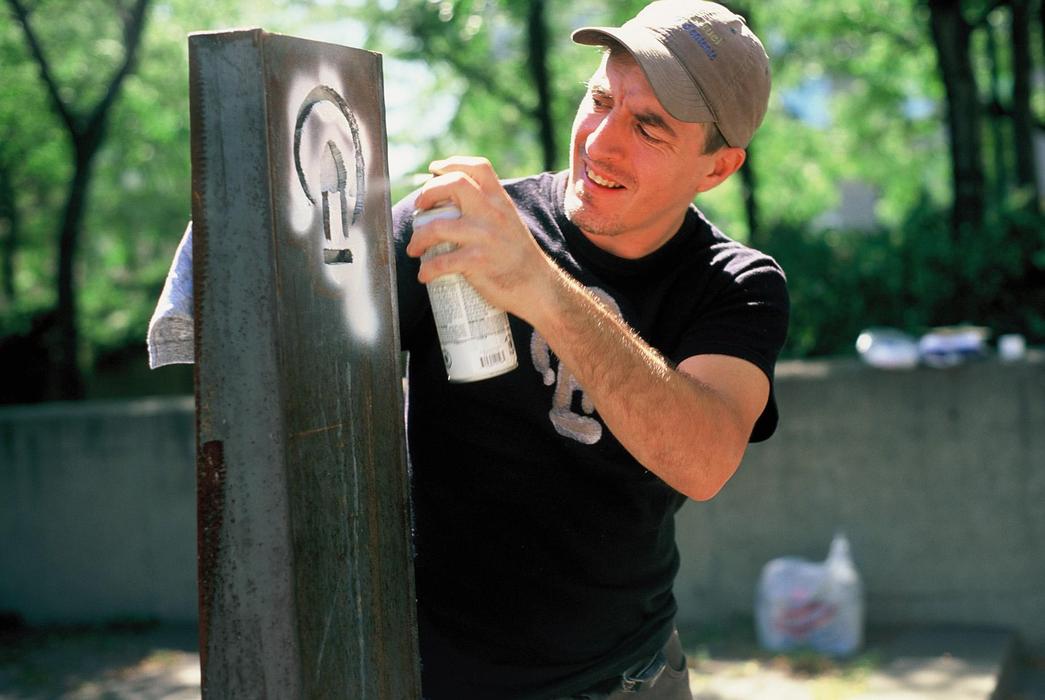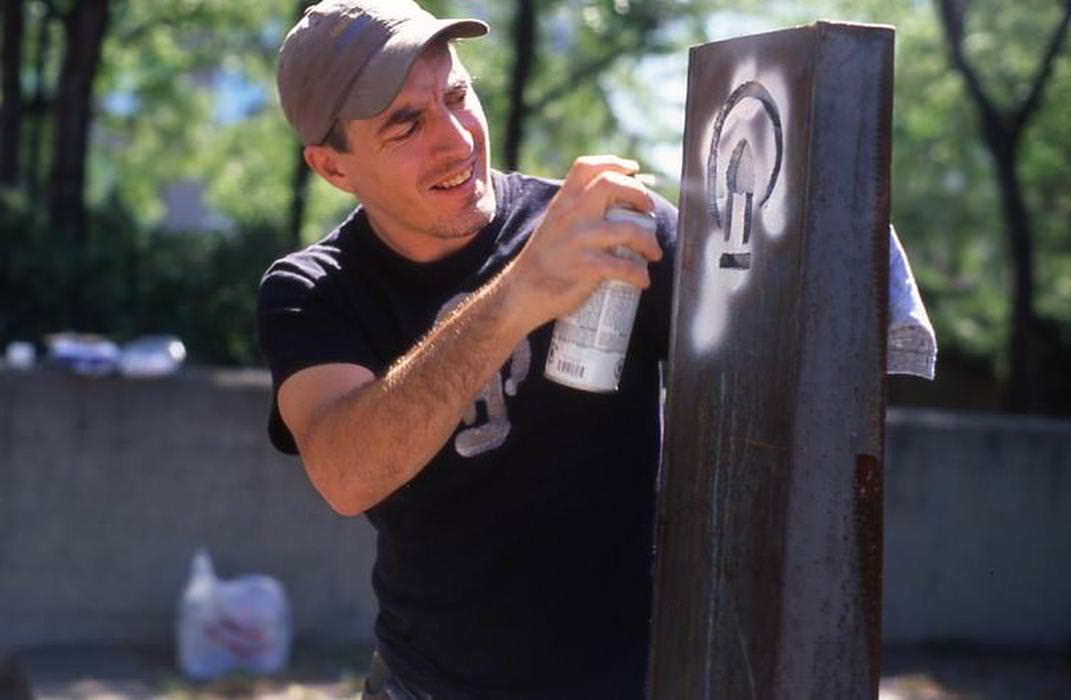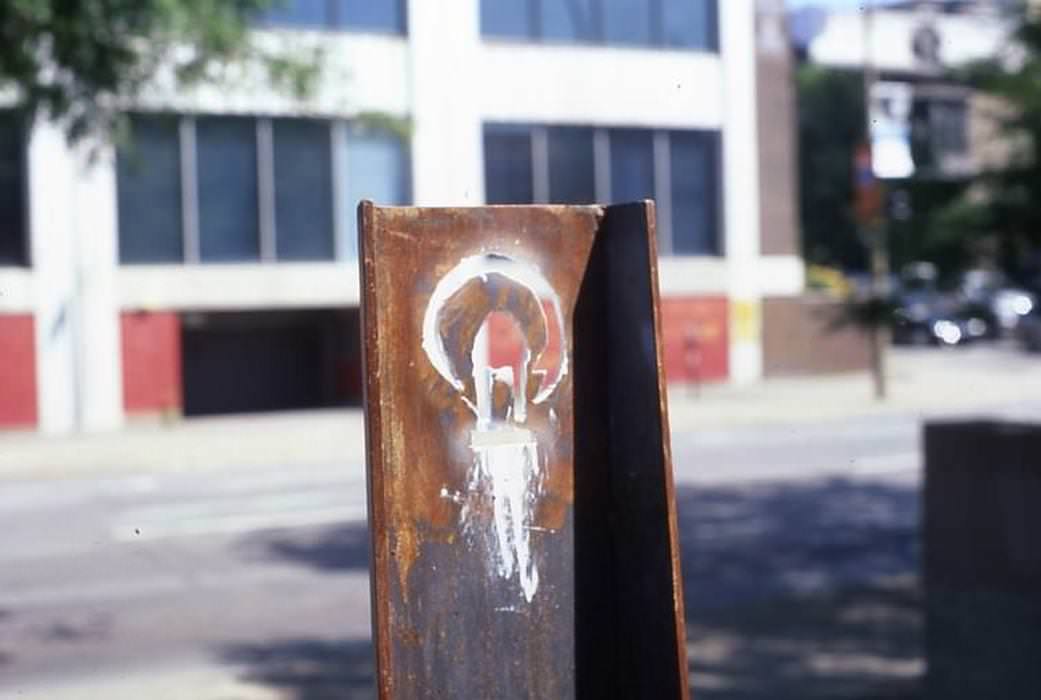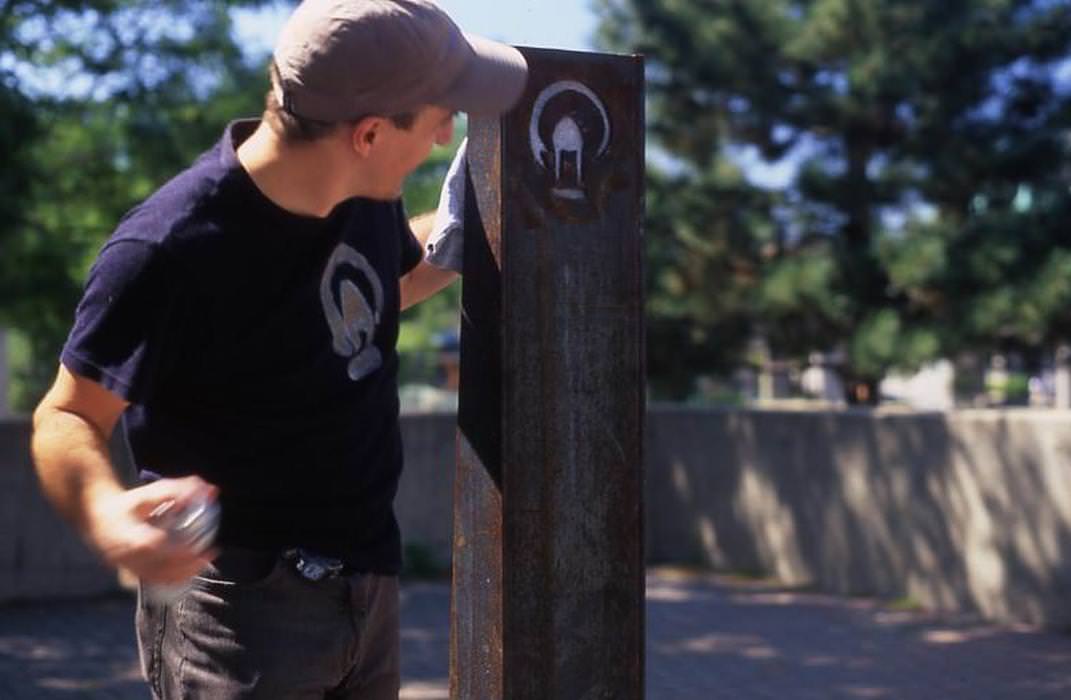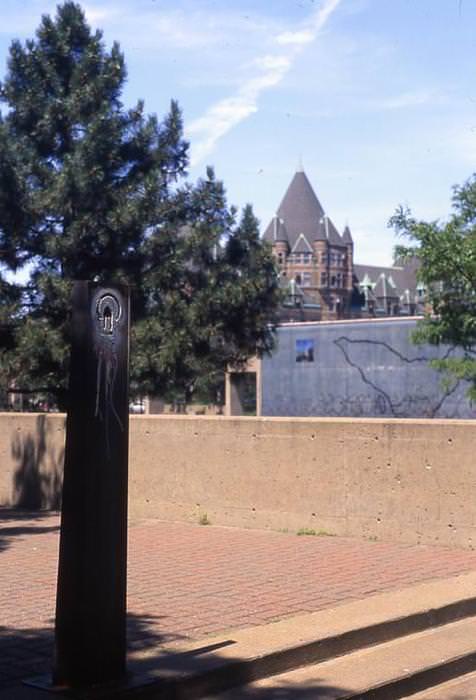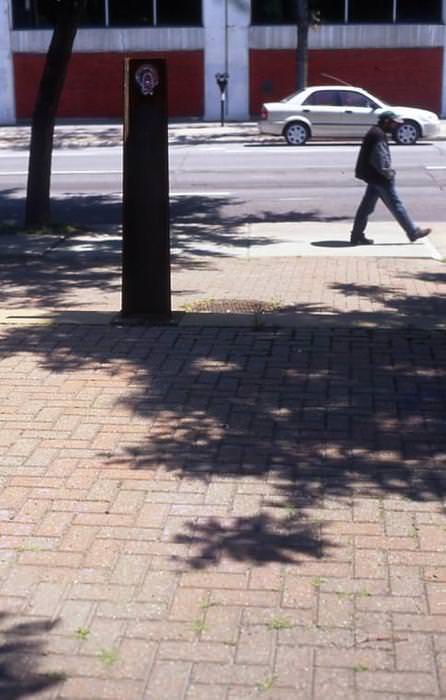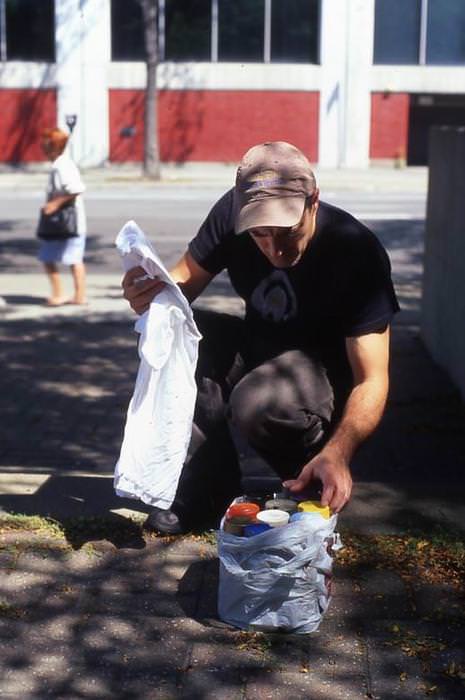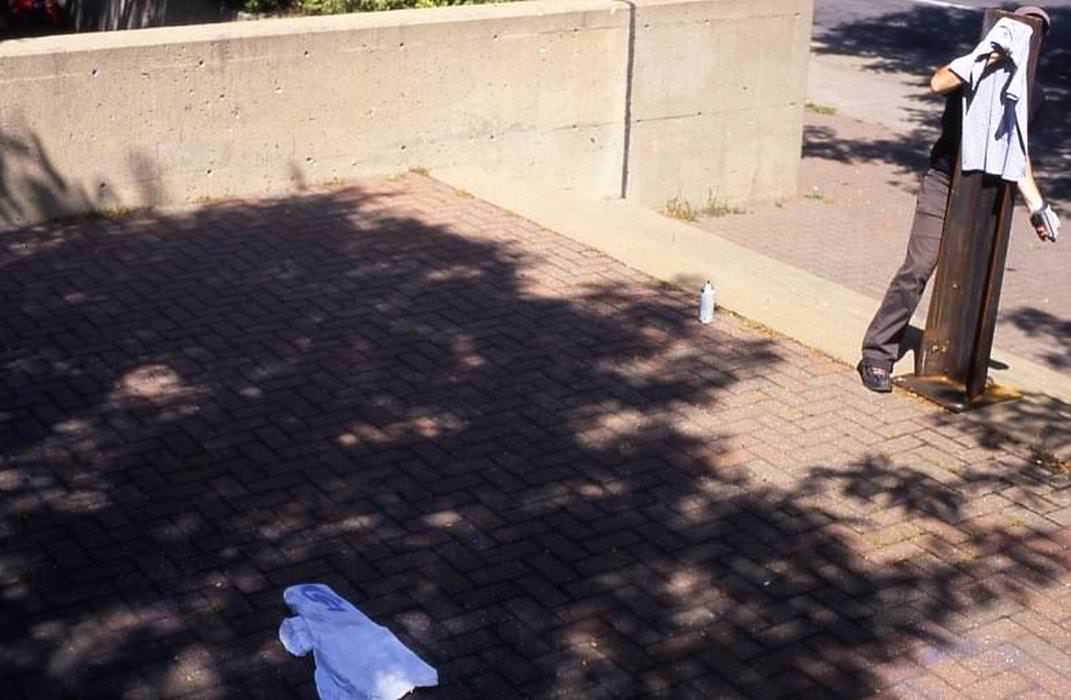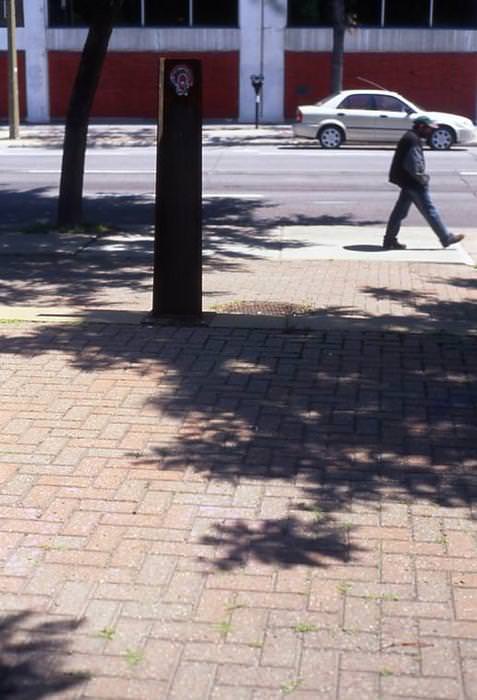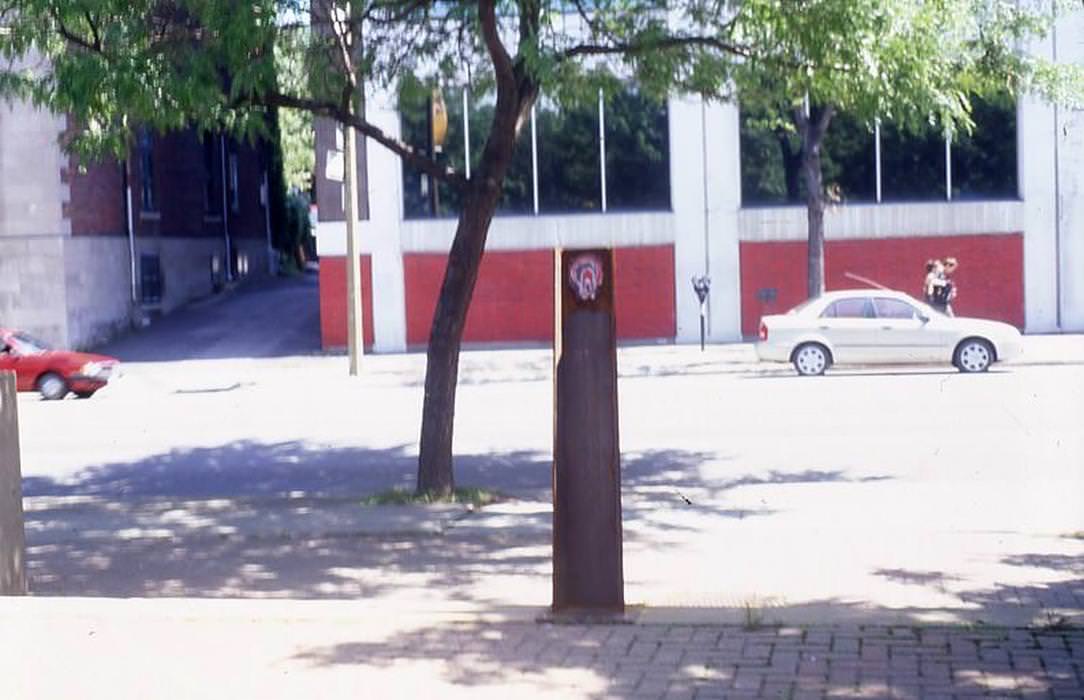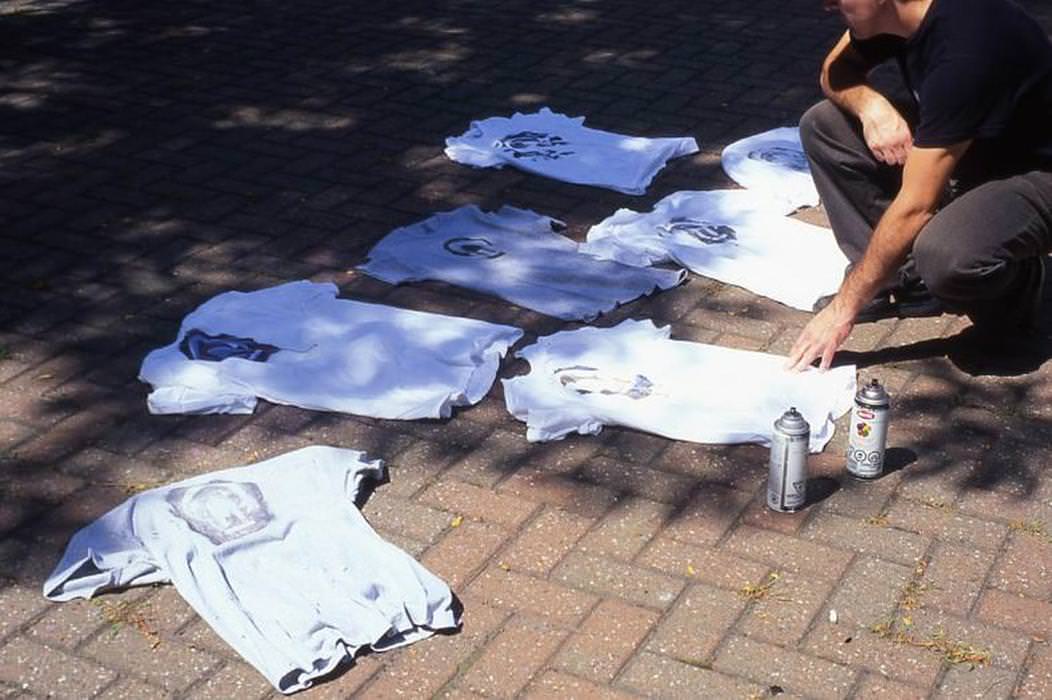Programming
Thomas Grondin
Le soldat inconnu
You are invited to a very special research in the heart of the Centre-Sud district. Le soldat inconnu is a project that has emerged from an important moment in my life and from a find in my family roots.
View more
Research in the community
Beginning of the search and opening : Friday, June 10, 2005 from 5pm to 9pm at Viger Square (square west)
Lecture at Local JR-260 UQÀM on Friday, September 30, 2005
You are invited to a very special research in the heart of the Center-Sud district of Montreal. Le soldat inconnu is a project that has emerged from an important moment in my life and from a find in my family roots.
« Le serpent lové autour de ma masculité métaphorique »
Text taken from a drawing by Jean Boucher
Le soldat inconnu, as a project, is a strange thing for me. Such uncertainty characterizes this project, especially as to my role in this story. To carry out the project, I needed landmarks, an inking point. Moreover, it seemed to me important to emphasize the presence of my uncle and others who, like him, animated the district before sinking into oblivion; these marginal people more or less brilliant who live on the streets of Montreal. Viger square play a high role of this reality, the reopening of the park coinciding with the death of my uncle.
It was necessary to do something in respect of his soul. Commemoration is a difficult exercise. The idea then came to me to make a monument that would serve as a graffiti stencil, a kind of rebellious monument. I had to choose an image. My choice is based on a Jean Boucher motif that appears in one of his drawings accompanied by his words that seems to describe it, " Le serpent lové autour de ma masculinité métaphorique ". This is probably the decisive element that made me choose this symbol. The personal pronoun "ma" connects it to him.
This symbol also appears a few times in the works of Jean Boucher. It seems related to desire, especially to sexual desire, to faith eros and thanatos. I chose this motif in his work for its recurrence, originality, efficiency and to my knowledge this motif is not borrowed from others as it is the case for several signs that inhabit his drawings and paintings. This last reason is also interesting because it seems to change meaning according to the context in which it is found. Sometimes introspective, sometimes aggressive, it appeared to me as an attribute of my uncle, something that certainly represents him.
Project origins
In the summer of 2003, when my maternal grandmother died, I bought her house in Gatineau. It is in this house that my mother was raised, as well as all her brothers and sisters. It's the only house I've ever been to. This gesture surprised me, as if suddenly and naturally I continued the family tradition. The filial spirit is not very present in my family and even less at home, it seemed to me. I've always been a little out of my family. My choice to become an artist always seemed for me contrary to the environment from which I come, so much that I often wondered where I got this passion, this will. Even if my search for independence was satisfied with the misunderstanding of my family, a need for root, continuity with my blood was struggling in spite of myself. This link, I found it in some character traits, some eccentricities of my family members. When I was younger, I went to law school, following the family tradition, before dropping everything for visual arts. Secretly I would have liked to carry the genius of one of my ancestors. This filial need surely explains in part my decision to buy this house.
A typical inheritance conflict left me alone to clean the house once emptied of the few valuables it contained. An incredible mess of fifty years of accumulation awaited me.
This is in this jumble that I made the discovery. A portfolio and some boxes containing objects that belonged to my uncle Jean Boucher. I did not really know Jean, I was only thirteen when he died. At that time, it was already a long time ago that he was no longer seen at family reunions. He was a taboo subject in the family, so I had never been interested in him. A bum wandering in Montreal seemed to sum up this missing uncle. His suicide in 1984 only amplified the general silence. What was then my surprise to find in the house several paintings and drawings by his hand and a correspondence with my grandmother.
My questions about the meaning of my roots found an outlet in the discovery of this precursor in art. I quickly went through the correspondence. I analyzed the drawings, the paintings and the few objects left. Then came the idea of following in his footsteps, looking for places where he lived, trying to understand the environment in which he evolved. And quietly the crazy hope that I will meet maybe someone who knew the artist, rather than the uncle.
For me the question is simple, but frightening: do I have any links whatsoever with this stranger with whom I share my blood? Is there an inheritance? This inheritance that I wish and reject all at once.
Jean Boucher lived in Montreal between 1977 and 1984 before committing suicide. His work shows a certain marginality still alive today in the neighborhood. I'm looking for people who knew the neighborhood, the punk scene or, who knows, Jean himself during those years. This research will allow me to paint a portrait of the time to better contextualize and understand his work.
The project begins with an opening during which will be presented a monument incorporating one of the recurring motifs of his work, as well as some documents found at my grandmother's house. The research will continue until fall with an update of my research on the DARE-DARE website and on a bulletin board in Viger Square.
Link to a Montreal punk site: www.snubdom.com
Graduate of the University of Quebec in Outaouais since 1998, Thomas Grondin (Gatineau) has participated in several solo and group exhibitions in Quebec and Ontario, as well as curatorial projects. He recently presented Paradoxe d'aménagement (real estate project) at the Action Art Actuel Center in St-Jean-sur-le-Richelieu. Involved in the arts community, he sat on the board of directors of several artist centers and is currently president of the 3e Imperial in Granby. He is also an educator/guide at the National Gallery of Canada.
Rapport d'activité
La recherche débutait le 10 juin et se poursuivait jusqu’au 2 octobre 2005
L’artiste invitait le public à lui communiquer leurs histoires sur le quartier Centre-sud à Montréal
Thomas Grondin raconte qu’il a découvert, dans la maison de sa grand-mère qu’il venait tout juste d’acheter, une énigmatique série de tableaux et de dessins. L’ensemble a été réalisé par Jean Boucher, un oncle qu’il a peu connu, décédé de façon dramatique au début des années 80. Cette trouvaille, ajoutée à l’acquisition d’un élément important du patrimoine familial, sans oublier la rupture récente avec la mère de son fils, l’a plongé dans de profondes questions sur le sens de la famille et le sens de la vie. Il s’est projeté dans l’image de son jeune oncle suicidaire en cherchant, à travers la production de ce dernier, des réponses, ou à tout le moins des questions qui l’auraient soulagé du poids de sa propre existence. Thomas Grondin vivait une période difficile et c’est en rendant hommage à son oncle disparu qu’il se libérait d’une pulsion romantique et négative du créateur en mal de vivre.
L’oncle aurait résidé dans une maison de chambre à Montréal, près du square Viger, entre 1977 et 1984. Thomas Grondin débute ses recherches dans le secteur dès l’automne 2004 et passe une année entière à enquêter. Il tente de modeler, définir, sculpter l’histoire de cet oncle artiste, disparu dans la jeune vingtaine. Il vient à la roulotte fréquemment, à la fois inquiété et excité par les indices qui prennent forme avec et malgré lui. À la fin du mois de mai de l’année suivante, Grondin installe au square un monument à la mémoire de Jean Boucher, ce soldat inconnu. Sur le monument en acier rouillé, qui semble toujours avoir été là, est perforé à la torche un motif récurant de la production de l’artiste. Ce motif ainsi découpé devient un pochoir permettant d’être disséminé. Les squatteurs, les passants ou les visiteurs sont encouragés à le recopier sur leurs vêtements ou objets personnels, apposant, du même coup, sur les pourtours du pochoir, des graffitis de peinture à la bombe.
Durant la mise en place de la sculpture, par un étrange concours de circonstances, la roulotte de DARE-DARE est la proie des flammes, ne laissant qu’un tas de ferraille déprimant. Le jour de l’inauguration a été marqué par cette perte. Une résidante du coin, au courant des recherches de Grondin, aurait déclaré que c’est l’âme maudite de Boucher qui plane sur le square.
À l’été 2005, Grondin sollicite directement l’aide des résidants du quartier en distribuant des avis de recherche dans les boîtes aux lettres ou en les abordant au hasard, dans le square et les rues adjacentes. L’enquête devient un prétexte à la rencontre, à la création de liens entre des inconnus; une manière de faire parler les gens d’eux-mêmes et de l’histoire du quartier. La mémoire ainsi stimulée active le sentiment d’appartenance. L’artiste accumule les témoignages qui lui permettent de mieux comprendre la vie de Boucher, ainsi que le contexte social et politique qui ont influencé sa production. Grondin revêt le rôle de l’historien de l’art, en ajoutant une grande part de subjectivité provenant des autres et de lui-même, ce qui ne manque pas de questionner la manière dont on fait l’histoire en général, les motivations qui poussent les recherches, la méthodologie et ce qui est retenu ou oublié.
Un aveu troublant dans ce projet doit être énoncé ici. Le personnage, qui porte un nom quasiment générique, le fameux Jean Boucher, est pure fiction. Il n’a jamais existé, du moins, c’est ce que Grondin a déclaré. (S’il nous est encore possible de le croire!) Sachant cela, le projet, et les paragraphes que vous venez de lire, prennent un tout autre sens. Il est difficile maintenant de départir le vrai du faux. Grondin a insufflé une histoire dans le réel en cherchant à construire, à travers des témoignages et des faits, une fiction. Cette stratégie bouleverse nos attentes, remet en question notre confiance en ce qui nous est donné à voir et à entendre. C’est aussi une nouvelle manière de faire l’histoire: amasser de l'information en partant d’un personnage inventé.
Le centre DARE-DARE était complice de ce jeu depuis le tout début du projet. L'équipe assistait à l’apparition des œuvres de Jean Boucher, peintes et dessinées par Thomas Grondin lui-même. On a lu la dernière lettre de l’artiste, destinée à une tante, juste avant son overdose. L’ensemble se profilait avec intelligence et cohérence. On suivait avec passion les hypothèses de l’historien de l’art en pleine construction de sa fiction.
Dans le cadre de l’événement d’art public Périmétre, organisé par DARE-DARE à la fin de septembre 2005, Thomas Grondin a été invité à prononcer une conférence sur son projet. L’artiste a choisi de poursuivre dans sa fiction et nous a fait vivre une fausse conférence. Dans une classe de l’Université du Québec à Montréal, on a assisté à une présentation avec diaporama numérique tout à fait crédible. Des liens entre la vie de Boucher, les faits marquants et les tendances plastiques au tournant des années quatre-vingts s’établissaient avec le corpus de son œuvre. Une atmosphère étrange régnait autour de la table. Certains spectateurs, sachant qu’il s’agissait là d’une performance, s’amusaient à poser des questions pour évaluer la force du scénario, tandis que d’autres, non-informés, écoutaient tout simplement une conférence sans se douter du leurre. Cette présentation clôturait la participation de DARE-DARE au projet Un soldat inconnu. On attend avec intérêt la forme que prendra la suite de ce riche travail de recherche et d’exploration
Marie-Suzanne Désilets, octobre 2005
